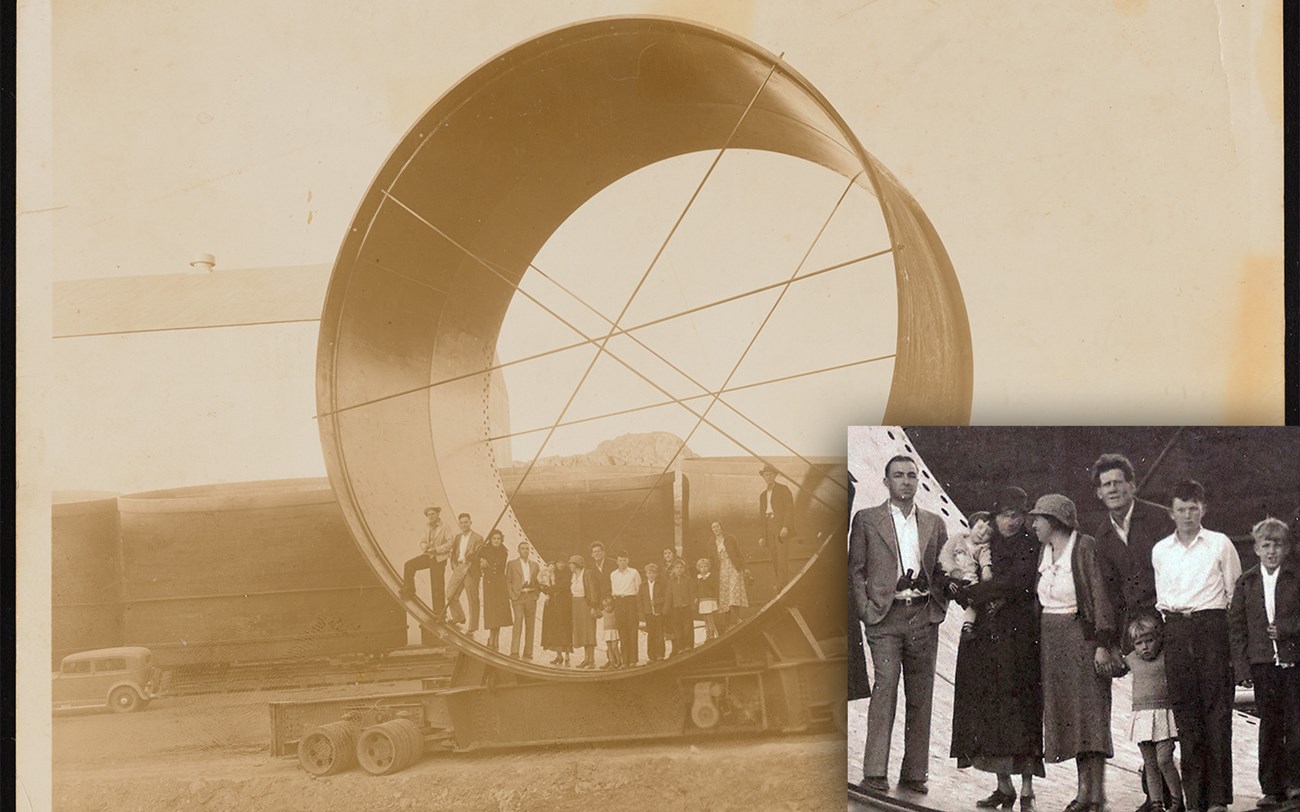Part of a series of articles titled Women's History in the Pacific West - Lower Colorado Basin Collection.
Previous: Maria Arcadia Israel
Next: Maite Arce
Article

Tom and Erma Godbey Photograph Collection, approximately 1930-1940. PH-00262. Special Collections and Archives, University Libraries, University of Nevada, Las Vegas.
Erma Ouida Godbey’s life exemplifies women’s experiences of and contributions to the Depression-era origins of Lake Mead and urban Nevada. She was born Erma Ouida Drummon in the mining town of Silverton, Colorado on September 25, 1905.1 At the age of eighteen, she married a miner and odd-jobs man, Thomas Godbey.2 Throughout the 1920s, as their family grew, depressed economic conditions in mining communities forced the couple from job to job. By 1931, they joined thousands of other desperate families along the banks of the Colorado River looking for work on the soon-to-be-constructed Boulder Dam, renamed Hoover Dam in 1947.3
Godbey and her family continued to face very harsh conditions even after her husband obtained a job building service roads for dam builders to use. Godbey created a home in two tents on the Black Canyon floor, becoming part of a makeshift community of tents known as Ragtown. Daytime temperatures reached well over 100 degrees, resources were scarce, and services such as sewage and electricity were nonexistent. Godbey struggled along with many other families to feed, bathe, and clothe her children in these conditions. She recalled pinning blankets on the clothesline to shade her five small children through the sweltering heat of the day as she cooked over an open fire. When three women in Ragtown died of heat exhaustion, Godbey insisted that the family relocate.4
The Godbeys became a founding family of what would become Boulder City when they managed to purchase a plot of land from the federal government near the dam construction. They built their house there “by guess and by God,” sketching floorplans freehand and using donated doors from a nearby church.5 As some of the first homeowners in the city, they were thoroughly involved in building the community. They fundraised and lobbied for the creation of a school, hospital, community pool, library, and cemetery. They also led many of these institutions.6
Like many women during World War II, Godbey contributed to the US war effort through homefront support for soldiers. With her sons serving overseas, this service work was personal. Godbey was chairperson of the Red Cross, president of the PTA, and head of the VFW Auxiliary and the Navy Mothers Club. She also hosted hundreds of soldiers-in-training on leave, feeding dozens at a time with her own food rations.7 As she said of this time, “it was very satisfying work. It was very busy work and tiring, but it was satisfying."8
By the end of her life in 1997, Godbey had seen the riverbed where she had once pitched her tent replaced with an impressive dam that created Lake Mead and that is now part of Lake Mead National Recreation Area. She had witnessed the parcel of land that the family had purchased in the Nevada desert become part of a thriving town and community. Her dedication to community and determination in the face of adversity contributed to these foundational transformations in the Nevada landscape.
Part of a series of articles titled Women's History in the Pacific West - Lower Colorado Basin Collection.
Previous: Maria Arcadia Israel
Next: Maite Arce
Last updated: March 31, 2022